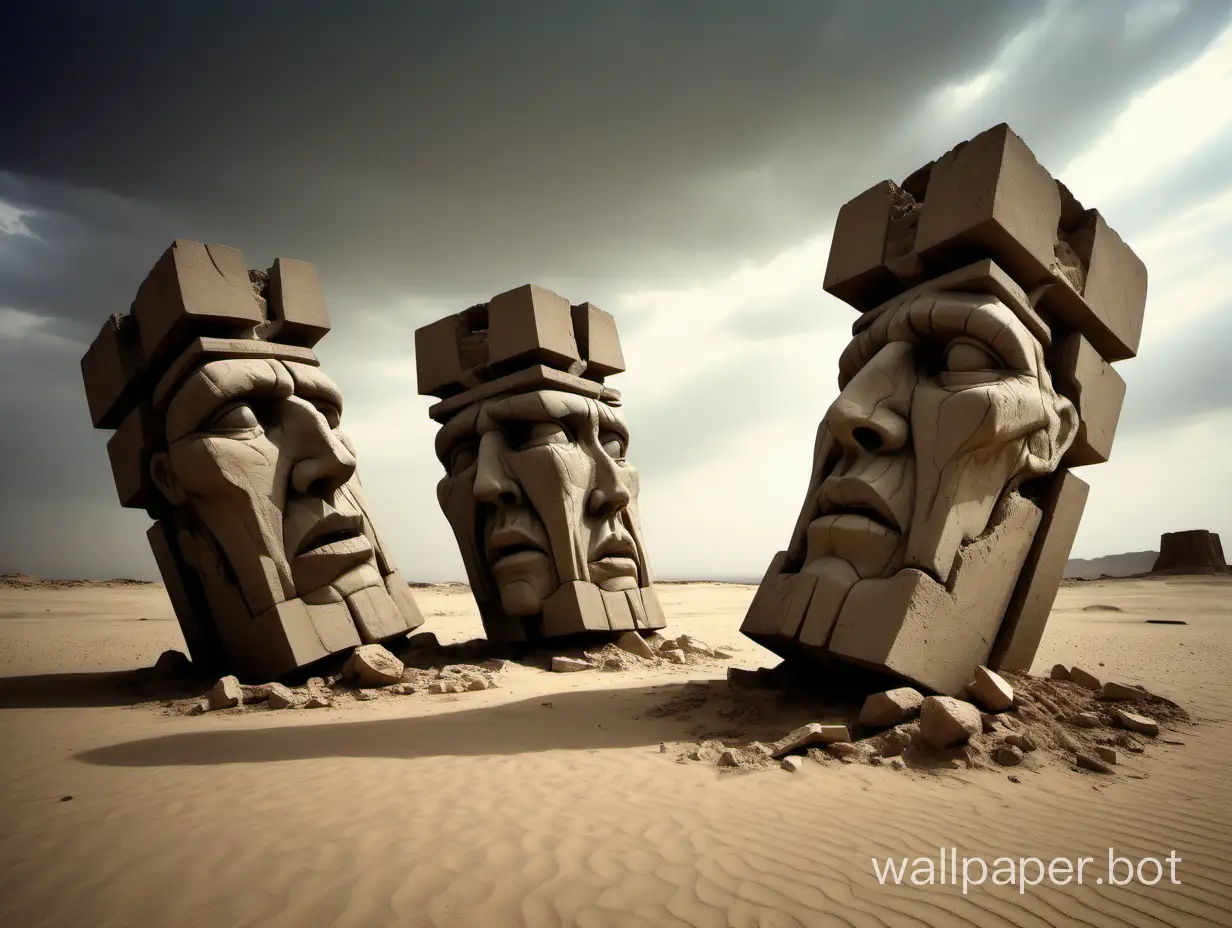Desert Statue Ozymandias King of Kings Monument in Ruins

AI Wallpaper Prompt
Prompt
Deux jambes de pierre immenses et dépourvues de buste
Se dressent dans le désert. Près d’elles, sur le sable,
À moitié enfoui, gît un visage brisé dont le sourcil froncé,
La lèvre plissée et le rictus de froide autorité
Disent que son sculpteur sut lire les passions
Qui survivent encore dans ces objets sans vie
À la main qui les imita et au cœur qui les nourrit.
Et sur le piédestal apparaissent ces mots :
« Mon nom est Ozymandias, Roi des Rois. Voyez mon œuvre, ô puissants, et désespérez ! ». Ici, rien ne demeure. Autour des ruines de cette colossale épave, infinis et nus, les sables monotones et solitaires s’étendent au loin.
Model: realistic
Ratio: 4:3
Related AI Images
Related Tags
AI Wallpaper Prompt Analysis
- Subject: The subject of the image is a desert landscape dominated by an immense stone statue of Ozymandias, King of Kings. The statue is depicted as fragmented and in ruins, with only the legs remaining intact while the rest lies half-buried in the sand. The shattered face with a furrowed brow and a grimace of cold authority serves as a focal point, symbolizing the once-powerful ruler's expression of dominance and arrogance. The barren desert setting emphasizes the theme of desolation and the passage of time, echoing the sentiments conveyed in the poem. Setting/Background: The image portrays a vast desert expanse with lone and level sands stretching far away, evoking a sense of isolation and emptiness. The weathered stone statue stands as a solitary monument amidst the desolate landscape, accentuating the theme of decay and the transient nature of human achievements. Style/Coloring: The artistic style of the image may feature realistic or impressionistic elements to capture the rugged texture of the desert terrain and the weathered appearance of the statue. Earthy tones such as sandy beige, brown, and gray dominate the color palette, conveying the harshness and aridity of the desert environment. Action/Items: There may be subtle details incorporated into the scene, such as scattered debris or remnants of civilization, hinting at the passage of time and the decline of Ozymandias' once-great empire. The presence of a broken inscription pedestal near the statue could reinforce the theme of lost grandeur and the futility of human ambition. Costume/Appearance: The statue of Ozymandias may be depicted wearing regal attire or adorned with symbols of power and authority, reflecting his status as a king. However, the worn and weather-beaten appearance of the statue highlights the inevitable decay and erosion of even the most formidable structures. Accessories: Surrounding the statue, there might be elements such as crumbling pillars or remnants of architectural features, further emphasizing the theme of dilapidation and the transience of worldly power.